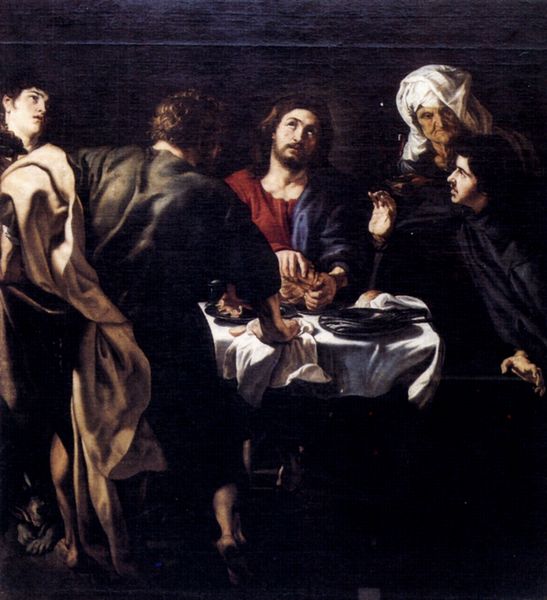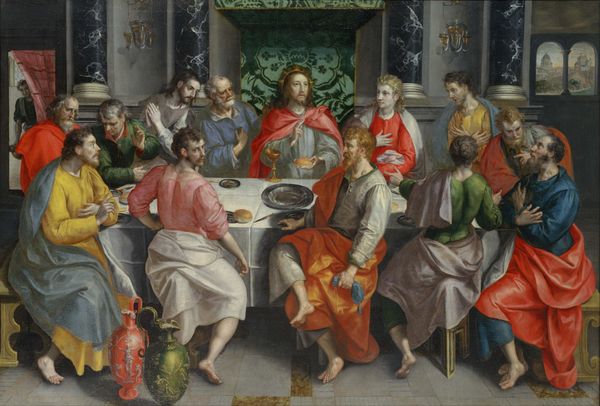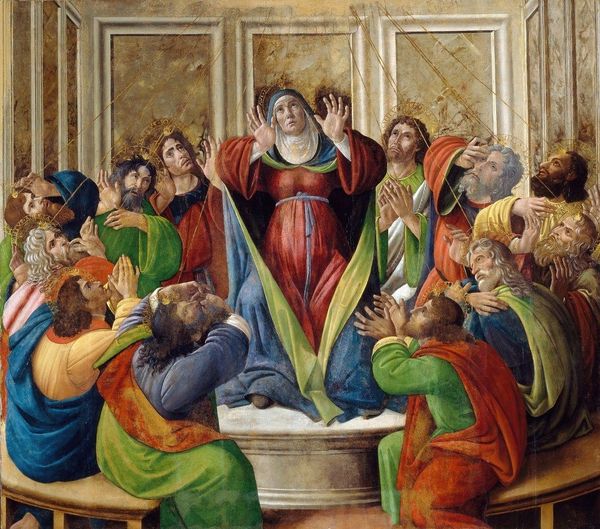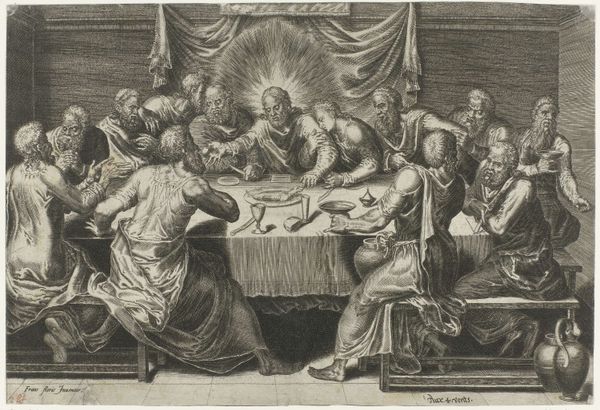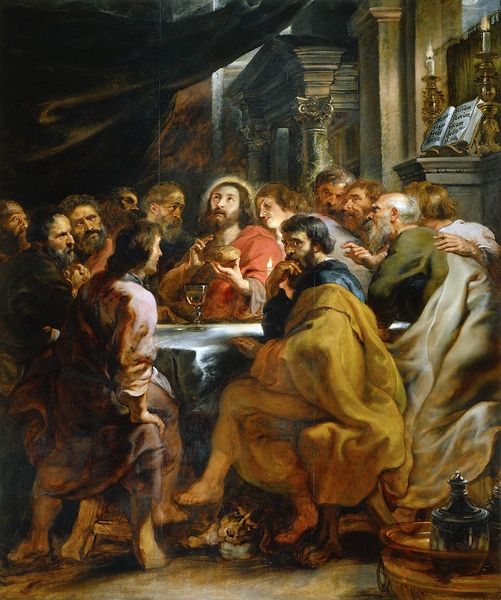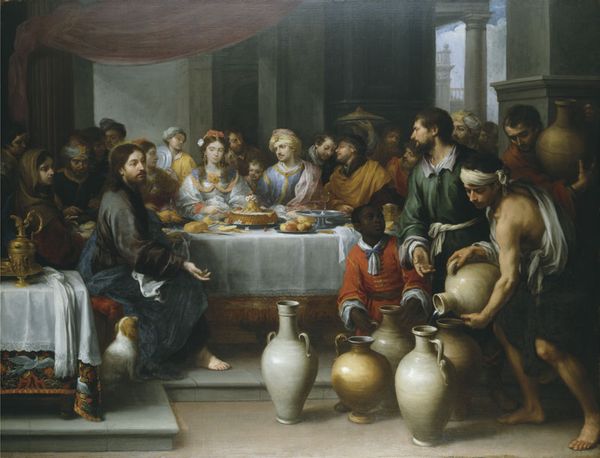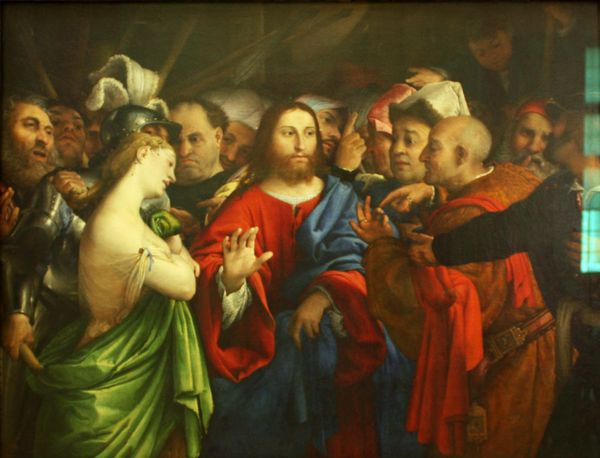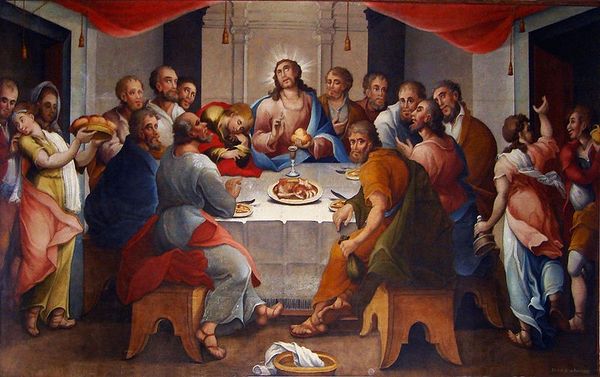
oil-paint
#
portrait
#
narrative-art
#
oil-paint
#
mannerism
#
oil painting
#
christianity
#
history-painting
#
italian-renaissance
#
christ
Dimensions: 230 x 173 cm
Copyright: Public domain
Curator: Pontormo's "Last Supper at Emmaus," dating back to 1525, currently resides in the Uffizi Gallery in Florence. Editor: It has an odd stillness. All those intense stares, and the curious geometric figure floating above… it makes me a bit uneasy. Curator: Unease is, I think, intentional. Consider the Mannerist style; the unsettling composition subverts Renaissance ideals of balance. The elongated figures, almost weightless, challenge traditional notions of spatial depth and volume. The all-seeing eye, surrounded by a triangle and floating above Christ, adds another layer of complexity. Editor: The setting seems… deliberately mundane, almost like a contemporary, everyday space rather than the biblical scene it is meant to depict. Is there a socio-political meaning to the artist situating the sacred within the profane? Curator: Absolutely. Think of the Reformation then roiling Europe. The overt display of divinity combined with everyday realism could be seen as a direct engagement with theological debates questioning the mediation of sacred events by religious institutions. The lack of idealization of figures underscores this emphasis on earthly rather than ethereal concerns. Editor: It's remarkable how Pontormo utilizes the oil paint to create that luminosity and those dramatic contrasts. Is the emotional tension embedded in the interplay between light and dark intended to unsettle the viewer, prompting them to question their beliefs, or what is certain or not? Curator: I think your assessment is valid. Pontormo expertly uses color and form to convey uncertainty and disquiet. By destabilizing established norms and artistic conventions, it invites viewers to reevaluate established systems of knowledge. It also could be questioning assumptions in his era. Editor: I hadn’t expected such complexity to be layered into a seemingly straightforward depiction. Curator: Pontormo’s genius lies precisely in his ability to transcend mere representation. Editor: It prompts new questions about historical and social forces embedded into works of art. Curator: I agree; by examining its formal features, one can begin to understand not just what is depicted but *how* it impacts the viewers.
Comments
No comments
Be the first to comment and join the conversation on the ultimate creative platform.
